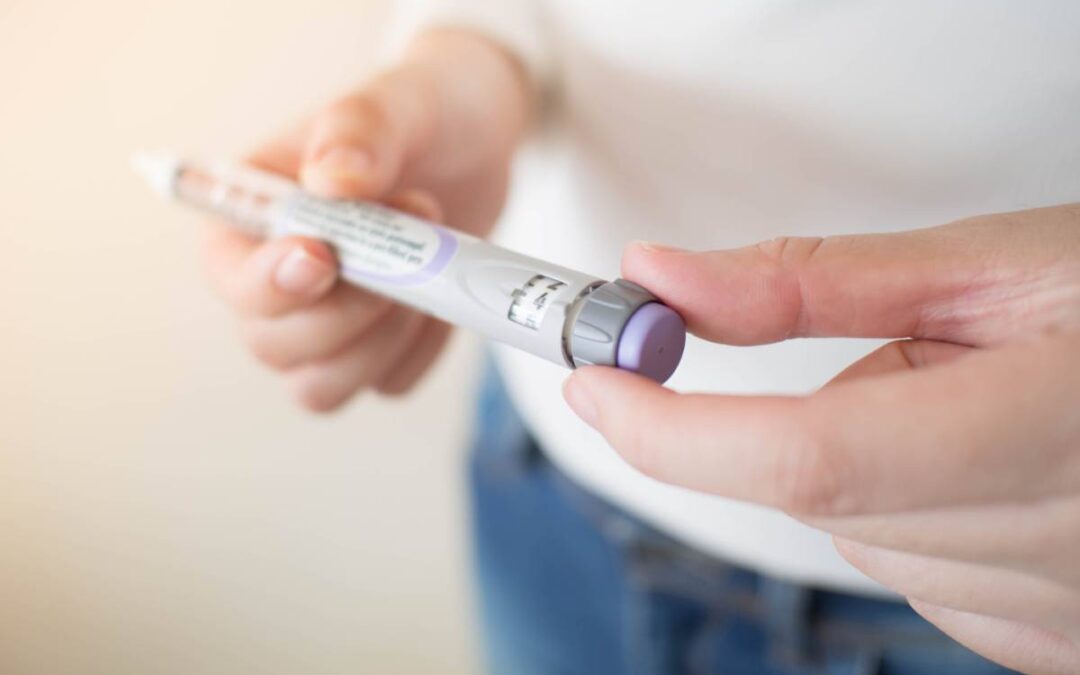Semaglutide, a glucagon-like peptide-1 (GLP-1) agonist, is employed for the treatment of type 2 diabetes mellitus and obesity. Other examples of GLP-1 agonists include exenatide, lixisenatide, liraglutide, albiglutide, and dulaglutide. These medications are incretin hormones that stimulate insulin secretion after oral glucose consumption, delay gastric emptying, and inhibit glucagon production. These medications are injectable and administered subcutaneously. They also promote weight loss and can improve cardiovascular health (Collins & Costello, 2023). Semaglutide and other GLP-1 agonists have made a huge impact on the health sphere, but data is also demonstrating the risks of taking it before surgery.
One significant advantage of GLP-1 agonists, including semaglutide, over earlier generations of diabetes drugs is their minimal risk of causing hypoglycemia (Collins & Costello, 2023). However, they have side effects including nausea, vomiting, diarrhea, dizziness, infection, headaches, and dyspepsia. Severe complications noted in users of GLP-1 agonists have included acute pancreatitis (Collins & Costello, 2023). It is crucial to note that patients with severe renal dysfunction should avoid GLP-1 agonists. However, patients with moderate or mild renal dysfunction may be able to take them but require more careful monitoring and dosing escalation (Collins & Costello, 2023). For semaglutide specifically, patients with kidney dysfunction do not require renal dosing adjustments (“Key Considerations in Use of SGLT2 Inhibitors and GLP-1RAs for CV Risk Reduction in Patients with T2D”, 2020)
Contraindications to GLP-1 agonists include a history of serious hypersensitivity reactions to a GLP-1 agonist, pregnancy, breastfeeding, and a personal or family history of medullary or thyroid cancer or MEN2 (“Key Considerations in Use of SGLT2 Inhibitors and GLP-1RAs for CV Risk Reduction in Patients with T2D”, 2020). New guidelines also indicate when a patient should stop taking semaglutide or other GLP-1 agonists before surgery.
GLP-1 agonists work by delaying food digestion and increasing satiety. However, patients must have an empty stomach prior to surgery due to increased risks of aspiration and subsequent morbidity and mortality (Klein, et al., 2023). To address this concern, patients on semaglutide should stop the drug either the day of or the day before their surgery. (Joshi, et al., 2023) (Hulst et al., 2021). This does not apply in any emergent or urgent situation. As these drugs are newer on the market, anecdotal reports and case reports make up a large portion of the literature, but research is continuing. Generally, the effects of slowed gastric emptying are with long-term use of GLP-1 agonists (Joshi, et al., 2023). If a patient has not stopped their GLP-1 agonist as recommended, they may proceed with ‘full stomach’ anesthetic precautions (Joshi, et al., 2023).
In the perioperative period, GLP-1 agonists are useful for improving glycemic control, as poor glycemic control is associated with increased postoperative risks (Hulst, et al., 2021). However, there are situations in which GLP-1 agonists should be discontinued in perioperative care such in cases of acute kidney injury requiring renal replacement therapy and in cases of postoperative ileus (Hurst, et al., 2021).
Semaglutide, like other GLP-1 agonists, is a valuable medication in the treatment of type 2 diabetes and obesity and is increasing in popularity. However, due to its gastric effects, it is generally recommended to pause semaglutide before surgery. The time during which it must be stopped depends on if a patient receives daily or weekly dosing of a GLP-1 agonist. In the case of semaglutide, which is administered weekly, it is generally recommended patients pause the medication a week prior to their surgery. Notably, this is regardless of that patient’s specific indication for taking semaglutide (Joshi, et al., 2023). Healthcare professionals must be aware of the contraindications and potential side effects of GLP-1 agonists, including in the surgical context. While these medications hold numerous potential benefits, further research is required to better understand how to optimize their use.
References
- Collins, Logan, and Ryan A Costello. “Glucagon-like Peptide-1 Receptor Agonists – Statpearls – NCBI BOOKSHELF.” National Library of Medicine , 13 Jan. 2023, www.ncbi.nlm.nih.gov/books/NBK551568/.
- Hulst, Abraham H et al. “Preoperative considerations of new long-acting glucagon-like peptide-1 receptor agonists in diabetes mellitus.” British journal of anaesthesia vol. 126,3 (2021): 567-571. doi:10.1016/j.bja.2020.10.023
- Joshi, Girish P., et al. “American Society of Anesthesiologists Consensus-Based Guidance on Preoperative Management of Patients (Adults and Children) on Glucagon-like Peptide-1 (GLP-1) Receptor Agonists.” American Society of Anesthesiologists (ASA), 29 June 2023, www.asahq.org/about-asa/newsroom/news-releases/2023/06/american-society-of-anesthesiologists-consensus-based-guidance-on-preoperative.
- “Key Considerations in Use of SGLT2 Inhibitors and GLP-1RAs for CV Risk Reduction in Patients with T2D.” American College of Cardiology , Aug. 2020, www.acc.org/~/media/3637039CEAAD474A95E6A1F3DFC850B3.pdf.
- Klein, Sandra R, and Ion A Hobai. “Semaglutide, delayed gastric emptying, and intraoperative pulmonary aspiration: a case report.” “Sémaglutide, vidange gastrique retardée et aspiration pulmonaire peropératoire : une présentation de cas.” Canadian journal of anaesthesia = Journal canadien d’anesthesie, 10.1007/s12630-023-02440-3. 28 Mar. 2023, doi:10.1007/s12630-023-02440-3





Recent Comments